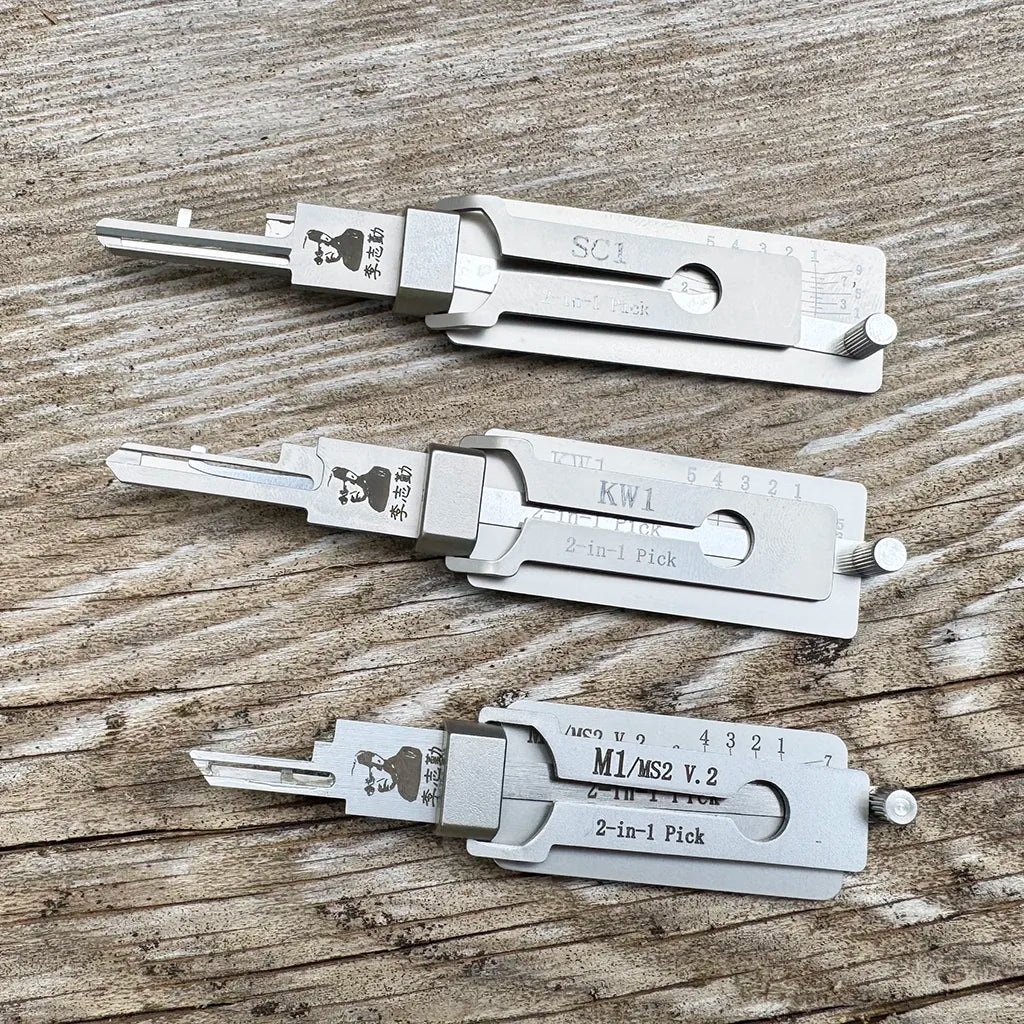
Guide to Lock Picking
Share
Lock picking is an intriguing skill that blends precision, patience, and practice. Whether you're a hobbyist, locksmith-in-training, or just curious, understanding the mechanics of a pin and tumbler lock is your first step. Here's a quick guide to get you started.
Understanding Pin and Tumbler Locks
The pin and tumbler lock is the most common type of lock. Inside the lock you'll find the following:
- Key Pins: Varying lengths that correspond to the grooves on a key.
- Driver Pins: Standard-sized pins that push the key pins.
- Shear Line: The gap where the key pins and driver pins align, allowing the lock to turn.
When you insert the correct key, the pins align at the shear line, unlocking the mechanism. Lock picking mimics this process without the key.
Tools of the Trade
To pick a lock, you'll need two essential tools:
- Tension Wrench: Applies slight rotational force to the lock cylinder.
- Pick: Manipulates the pins inside the lock.
Methods of Lock Picking
Single Pin Picking (SPP)
Single pin picking is a precise method that involves lifting each pin to the shear line individually.
- Insert the tension wrench into the bottom of the keyway and apply light rotational pressure.
- Insert your pick and feel for the pins.
- Push each pin gently until you feel it set at the shear line.
- Repeat until all pins are set and the lock turns.
Pros
- Offers greater control.
- Can work much better on higher security locks.
Cons
- Slower
- Requires more skill and patience.
Raking
Raking is a faster, less precise method that "scrubs" the pins into place.
- Insert the tension wrench and apply light pressure.
- Use a rake pick to move quickly back and forth, disrupting the pins.
- Adjust tension and repeat until the lock opens.
Pros
Quick and effective on basic locks.
Cons
Less effective on complex or high-security locks.
Tips for Success
Tension is Key - Too much pressure will bind the pins; too little won’t set them.
Practice - Start with practice locks or transparent models to understand pin movement.
Stay Legal - Ensure you have permission to pick a lock. Unauthorized lock picking is illegal in most jurisdictions.
Conclusion
Lock picking is a rewarding skill that improves with practice. Understanding the basics of pin and tumbler locks, mastering SPP and raking techniques, and practicing consistently will help you unlock your potential—literally and figuratively. Always use your skills responsibly! Lastly, if you're looking for the best set to get started with, look no further than our Executive Lock Pick Set!

